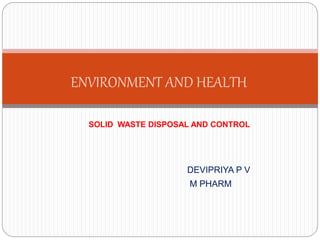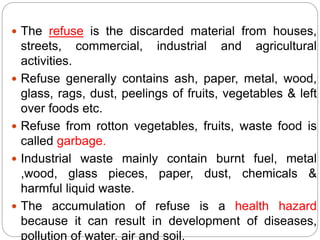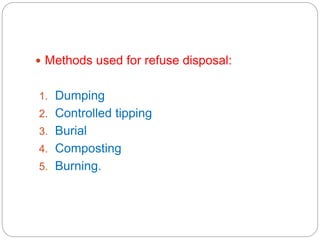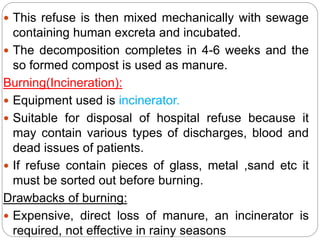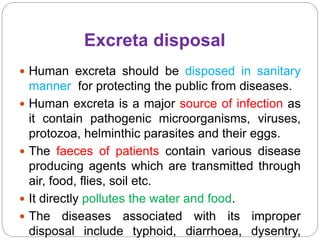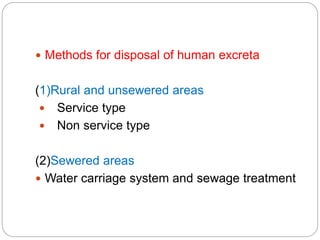The document discusses various methods of solid waste and human excreta disposal. It describes traditional methods like scavenging, conservancy systems using manual labor, as well as modern systems like water carriage. Key solid waste disposal methods covered are dumping, controlled tipping, burial, composting, and incineration. Methods of human excreta disposal discussed include service latrines, non-service latrines, sewerage systems, and the public health risks of improper disposal.
